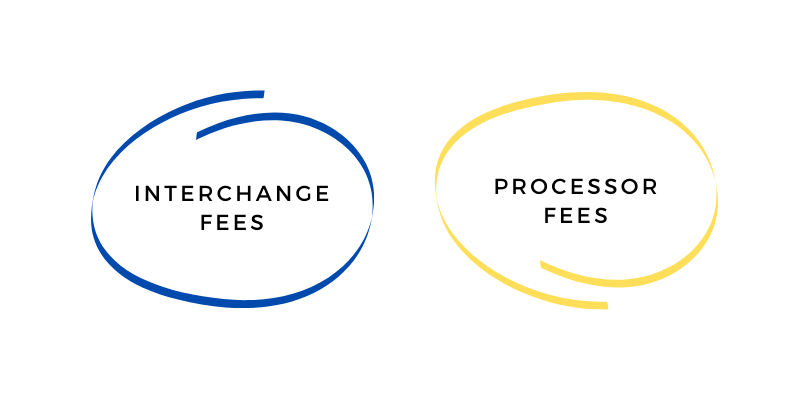Diversifying your payment options is very important in our constantly changing world. Consumers are moving away from using cash and prefer to use electronic payment methods. But, since there is no such thing as a free lunch, these payment methods have a cost associated. Transaction fees.
Remember that these fees are a necessary cost of doing business since, according to the Bank of Canada; there are approximately 74 million active credit cards in Canada alone. This means that the average Canadian will have at least 2 credit cards and a debit card. Transaction fees are the cost of capturing that market. The fees cover the expense of putting the transaction through all the channels it has to go through.
There is really no way to get around them. However, the fee you pay can vary depending on the processor and methods you use.
What makes up a transaction fee?

Fees have two main components: interchange and processor fees. The three main institutions involved are the financial institution, the credit card company, and the payment processor. Think of transaction fees as tax rates. They change depending on a variety of factors but they mostly depend on where you are. The bank’s fee will be like your federal tax. It is a standard charge that everyone has to pay (it will not vary very much between providers). Then depending on your province, or credit card company in this case, you’re charged an additional percentage. This is where significant variations start. After that you have to pay another variable rate depending on your city (the payment processor).
Much like tobacco or liquor taxation, additional taxes are included depending on the risk and type of transactions. The structure is this way because there are multiple intermediaries between that payment and your bank account.
These fees can vary from 0.5% all the way to 5% of the total transaction. The extra charges depend on on your location and the safety measures you have in place. Typically fees begin at around 2-3%, increasing up to 5% if the technology you use for transactions is older. They can even increase up to 10% if the payment processor includes hidden fees. Countertop payment terminals will usually have the lowest fees, while online will have the highest due to their risk. Every entity involved in the movement of that money takes a cut.
How to get the best transaction fee rate
When you shop around for a payment processor, make sure to look at any transaction rate with a grain of salt. Stick to reputable processors to protect yourself from unexpected and unwanted fees. Additional fees are usually not readily available. This is why the starting rate quoted to you may be a far cry from what you’ll actually be paying. Some payment processors will include hidden fees, so keep an eye on you statements to spot these. These additional fees can on average be up to 60 percent higher than your quoted rate.
The lack of transparency makes it difficult to estimate actual vs. quoted costs. Do your best to find as much information as you can before you sign a contract with a payment processor. Try to find payment solutions backed by well-known and well-tested processors. Moneris in Canada (to avoid exchange rates and international fees) or Global Payments in the US. This will save you time, money, and stress while shopping for a payment system.
Wiz-Tec’s payment solutions are all backed by Moneris to provide customers with preferred rates and secure transactions


1 thought on “Transaction fees: What are they and what is a great rate?”
Zero fees or no-cost credit card processing sounds attractive. Getting zero fee processing merchant services is something every business owner would find appealing.
Comments are closed.